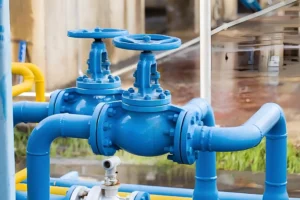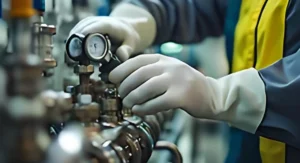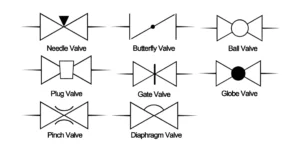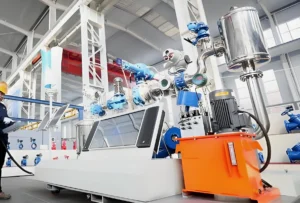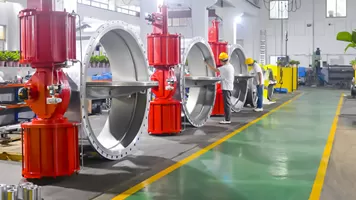In industrial production, valves serve as critical equipment for controlling fluid flow and must adapt to various operating conditions. High-temperature, high-pressure, and highly corrosive environments impose stringent demands on valve materials. Selecting appropriate materials is essential to ensure stable performance and extend the service life of valves.
Valve Materials for High-Temperature Operating Conditions
When valves operate in high-temperature environments, thermal stability, mechanical strength, and thermal fatigue resistance of materials become critical factors.
- Below 500°C: Carbon steel and low-alloy steel are commonly used due to their cost-effectiveness and machinability. However, their strength degrades significantly as temperatures rise.
- Above 538°C: Chromium-molybdenum (Cr-Mo) steel becomes the preferred material for valve bodies. For example, in coal-fired boiler systems, Cr-Mo steel is widely adopted for high-temperature steam pipeline valves, maintaining excellent creep resistance and strength under prolonged thermal stress.
- Up to 1035°C: SUS310S stainless steel is a standard choice, but its carbon content must be strictly controlled (0.04–0.08%) to ensure stability. Applications include reactors and exhaust systems requiring oxidation resistance.
- Extreme temperatures (>1200°C): Two strategies are employed:
- Non-metallic refractory liners (e.g., ceramic fiber composites): These provide thermal insulation to protect the valve’s structural integrity.
- Specialized superalloys (e.g., nickel-based monocrystalline alloys): Used in combustion chambers or metallurgical processes, they withstand direct exposure to 1000–1300°C but face challenges in high manufacturing costs and complex machining processes.
- Ductile Iron (Nodular Cast Iron):
- Replaces gray iron due to its nodular/spheroidal graphite structure, enhancing tensile strength (≥414 MPa) and impact resistance.
- Typical applications: Water, seawater, steam, and compressed air systems.
- Carbon Steel (e.g., ASTM A105):
- Offers balanced mechanical properties (Yield Strength: 250 MPa) and cost efficiency for steam, oil, and compressed air services.
- Alloy Steel (e.g., Cr-Mo Steel):
- Enhanced strength (Yield Strength: 480–620 MPa) and fatigue resistance via chromium/molybdenum additions.
- Widely used in oil/gas pipelines and refinery systems (e.g., ASTM A182 F11/F22).
- Nickel-Based Alloys (e.g., Inconel 718):
- Delivers exceptional yield strength (≥1,100 MPa) and fracture toughness for hydraulic systems or deep-sea equipment.
- Limitations: High cost (3–5× carbon steel) and complex machining requirements.
- ASME B16.34 Compliance: Mandatory for valves in HP services (≥PN 420).
- Pressure-Temperature Ratings: Material derating factors must be applied (e.g., SA-105 carbon steel loses 20% strength at 200°C).
- Case Study: Cameron’s 15,000 psi subsea valves use Inconel 625 cladding to resist hydrogen-induced cracking.
- Coated Cast Iron:
- Epoxy or phenolic coatings provide cost-effective protection (service life: 5–8 years).
- Limited to pH 6–9 environments with chloride content <200 ppm.
- 304 Stainless Steel (ASTM A276 Type 304):
- 18% Cr / 8% Ni composition resists oxidizing acids and atmospheric corrosion.
- Common in chemical processing and food industry valves.
- 316L Stainless Steel (UNS S31603):
- 2–3% Mo addition enhances pitting resistance (Critical Pitting Temperature: ≥25°C in 3.5% NaCl).
- Dominates desalination plants and offshore applications.
- Nickel Alloys (e.g., Hastelloy C-276):
- Resists HCl, H₂SO₄, and chlorides up to 190°C (PREN >65).
- Titanium Alloys (Grade 2/5):
- Ideal for aerospace/offshore valves due to high strength-to-weight ratio (UTS: 900 MPa) and seawater immunity.
- Cost barrier: Titanium valves cost 4–6× equivalent SS valves.


